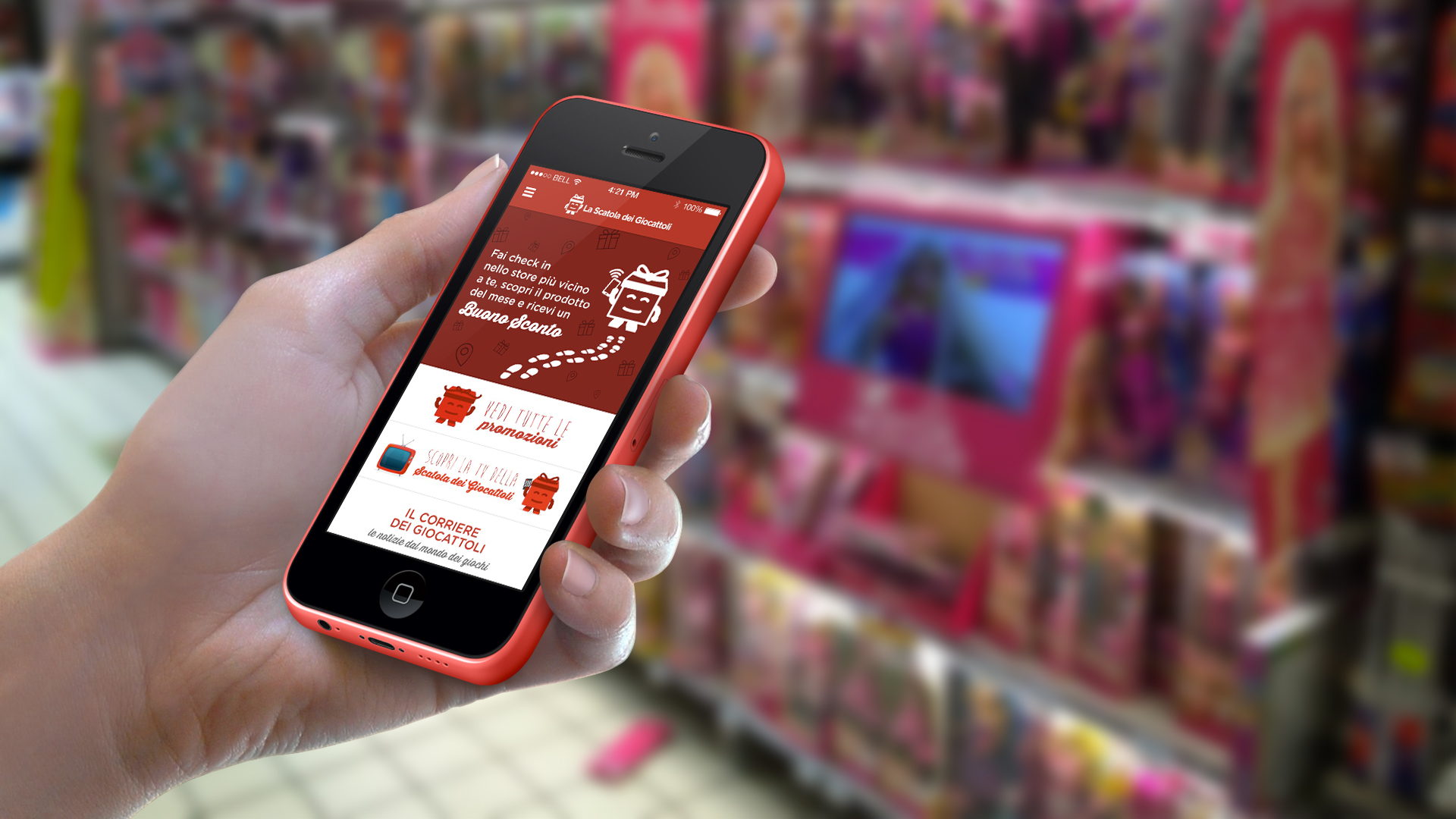
Bluetooth, iBeacon and smartphones: what are they doing in the same place? They are disrupting the idea of brick and mortar, shaping the future of retail customer experience. Proximity marketing is the final connection between brands and customers; an effective tool to generate repeat sales, deliver your brand message and drive the (r)evolution of retailers.
The renowned 4 P’s of McCarthy have long been the foundation of the business tool known as marketing mix. Product, Price, Promotion, Place: for decades retailers have responded to changes in market equilibrium relying on these levers of growth. In markets driven by mobile devices, however, the rhythm of innovation is so fast that four 'P's' are not enough. We need the fifth P of marketing, the most critical in the digital era, Proximity.
PROXIMITY WHAT?
Proximity marketing is defined as “the localized wireless distribution of advertising content associated with a particular place” (Wikipedia). Definitions, however, never tell the whole story. Proximity marketing, in fact, can't be reduced to mere advertising purposes (as it’s not confined to the retail industry).
Until recent years, a major marketing effort was aimed at reaching 'not well defined' consumers - broadly divided into target segments - with advertising, mostly one-fits-all content. The idea of a marketing strategy based on proximity was out of reach, due to technological limitations (unless you want to confuse proximity marketing with direct mail, in-store discount leaflets and door to door promotions).
But now you are able to offer personalized content when the customer is close or inside a store, right on his/her smartphone, to encourage specific behaviors, enhance the shopping experience and facilitate the purchase decision. The main objective of this new evolution, then, is to connect with empowered customers that mostly live in a digital world shaped by mobile devices. With this in mind, the idea of proximity - the physical location of a product with respect to the customer - linked to business strategies becomes a huge business opportunity.
PROXIMITY ENGAGEMENT
Proximity marketing is not just one tool; it is a set of technologies and devices that rebuild the way we interact with places and products. At the same time, not all retail innovations are related to proximity (Apple Pay and virtual reality, i.e.). But it’s undeniable that the crucial step into the future of retail customer experience will come from three major elements:
- iBeacon (Geo-fencing);
- Push notifications;
- The Internet of Things.
Despite the fact that it usually takes the center stage in discussions, too many companies still don’t get one important implication of proximity marketing: digital customer experience management requires a change outside AND inside the organization. More often than not, however, internal divisions of retail brands work like they’re complete strangers: some operate the stores and some the digital properties.

Few statistics, gathered by JiWire and published by Forbes, explain the value of Proximity Marketing:
-
53% of customers are willing to share their current location to receive more relevant advertising.
-
57% of customers are more likely to engage with location-based advertising.
-
62% of customers share local deals with friends.
-
63% of customers feel a coupon is the most valuable form of mobile marketing.
These numbers say that smartphones and all mobile devices (Apple Watch, anyone?) already play a huge role in engagement and loyalty programs. What’s not so clear, if anything, is whether the retail businesses are ready to understand the needs and wants of customers and adapt the very nature of the store to the digital environment.
MIND THE GAP
As of now, in fact, there is a deep gap between the omni-channel experience users live daily and the analog purchase experience they face when they enter the physical store. The future of retail customer experience lies in the necessity to close this gap with a mobile & digital bridge, and proximity marketing might be the answer to your prayers.
The 'iBeacon plus push notification' pair is one way to improve, not the remedy against all business problems. If you’re a traditional brick-and-mortar, you need to understand that technology is not an enemy; it’s your only chance to survive in the mobile ecosystem. There are at least four ways proximity marketing will drive retail marketing strategy:
-
Blurring the line between E-commerce and traditional store, two sides of the same customer journey;
-
Supporting the adoption of a true omni-channel marketing strategy: customers don’t live in just one channel anymore, why would you?;
- Personalizing the shopping experience, with tailor-cut contents, context aware offers and game dynamics;
-
Improving engagement and customer retention, connecting online and offline into a new level of experience.
If you keep walking at slow pace, while customers and competitors run, you will fail to overcome in one fell swoop the challenge of globalization, E-commerce and digital transformation. Proximity Marketing has tremendous revenue potential, but that’s not all about money: if properly managed, it will allow you to deepen the connection with clients, boost loyalty and ultimately improve the customer experience.
As practical advice: if you want to connect with your customers in a whole new way discover Neosperience Engage, the end-to-end mobile marketing solution to turn on smartphones like magic and deliver personalized experiences to customers close to, or inside the store.



 Your magnifing glass to deeply understand your users and increase the value of each relatonship.
Your magnifing glass to deeply understand your users and increase the value of each relatonship. Listen to the voice of your customers deeply to understand what they truly want.
Listen to the voice of your customers deeply to understand what they truly want. The Lead Generation Platform to get leads from anonymous traffic on your website.
The Lead Generation Platform to get leads from anonymous traffic on your website.  Understand the behavior of people in physical spaces and monitor safety requirements.
Understand the behavior of people in physical spaces and monitor safety requirements. The Digital Commerce Platform designed to follow the most modern technological standards..
The Digital Commerce Platform designed to follow the most modern technological standards.. The XReality platform to tell brand and product stories by connecting physical and digital worlds.
The XReality platform to tell brand and product stories by connecting physical and digital worlds. Points, rewards, levels, badges, missions: a world of nudges to nurture your customer community.
Points, rewards, levels, badges, missions: a world of nudges to nurture your customer community. Discover all the other solutions!
Discover all the other solutions!









